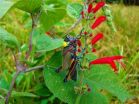(Press-News.org) Tumors shrank or disappeared and disease progression was temporarily halted in 15 children with advanced neuroblastoma enrolled in a safety study of an experimental antibody produced at St. Jude Children's Research Hospital. Four patients are still alive after more than two-and-a-half years and without additional treatment.
Findings from the Phase I study were published recently online and will appear in the May 10 edition of the Journal of Clinical Oncology. The results prompted St. Jude to expand clinical trials of the monoclonal antibody hu14.18K322A to include patients newly diagnosed with neuroblastoma. Monoclonal antibodies are engineered in the laboratory to recognize and attach to specific markers carried on the cell surface.
Neuroblastoma is a cancer of the sympathetic nervous system. It is the most common cancer diagnosed in the first year of life and accounts for 7 to 10 percent of childhood cancers. While certain patients, particularly infants, enjoy cure rates of 90 percent or better, the outlook is worse for high-risk patients, including those whose disease has spread widely. New treatments are urgently needed for these patients, less than half of whom currently enjoy long-term, disease-free survival.
"This was the first time this experimental antibody was tried in patients. We were encouraged with the response," said first and corresponding author Fariba Navid, M.D., an associate member of the St. Jude Department of Oncology. "The percentage of patients who benefited from treatment with hu14.18K322A was unusual for a Phase I study."
Phase I studies focus on questions related to the safety and best dose of experimental therapies. The research involves patient volunteers whose cancer has returned or did not respond to standard treatment, which for neuroblastoma includes surgery, chemotherapy, radiation and bone marrow transplants.
In this study, 38 St. Jude patients received one of nine different doses of hu14.18K322A. The immunotherapy is designed to activate the disease-fighting immune system to attack and kill tumor cells. Every 28 days, patients received an infusion of hu14.18K322A once daily for four days.
Of the 31 patients evaluated after two or more rounds of treatment, the disease stabilized in nine patients, tumors shrank in two patients and were undetectable in four more, researchers reported. "Four patients are alive after more than two-and-a-half years without additional therapy," Navid said.
Hu14.18K322A is an antibody engineered to recognize and attach to a molecule called the GD2 antigen. GD2 is found on the surface of almost all neuroblastoma cells as well as other tumors, including the skin cancer melanoma, the bone cancer osteosarcoma and soft-tissue sarcomas. The antigen is found on the normal cells of just a few tissues.
The antibody is produced in the Children's GMP, LLC. Navid said the study would not have been possible without the GMP, an on-site facility that makes highly specialized medicines and other biologics under government-approved Good Manufacturing Practices regulations.
The monoclonal antibody in this study is one of several antibodies targeting GD2 that are in clinical development for treatment of neuroblastoma. Hu14.18K322A is a modified version of another antibody. The main change, a point mutation in the human gene for hu14.18, was designed to address treatment-limiting pain by generating a more tailored response that avoided triggering part of the immune response called the complement cascade. In addition, the hu14.18K322A has fewer mouse components, making it less likely the body will reject the antibody. It is also made in a cell line that may improve its ability to kill tumor cells.
In this study, pain remained the most common side effect associated with hu14.18K322A treatment. While 68 percent of patients reported severe pain during the first round of treatment, Navid said the pain was manageable with medication and resolved within 24 hours of receiving the experimental antibody. The pain also lessened with each round of therapy. While direct comparisons between patients who received hu14.18K322A and a different version of the antibody are difficult, Navid said: "Our clinical impression is that the duration and severity of pain in patients receiving hu14.18K322A are less."
Clinical trials involving hu14.18K322A continue at St. Jude. Researchers are testing the impact of giving the monoclonal antibody weekly rather than every 28 days and in combination with other therapies.
INFORMATION:
The study's other authors are Barry Shulkin, Robert Kaufman, Catherine Billups, Jianrong Wu, Wayne Furman and Victor Santana, all of St. Jude; Lisa McGregor, formerly of St. Jude; Jim Allay, formerly of the St. Jude Children's GMP; Paul Sondel, Jacek Gan, Paul Hutson, Songwon Seo, KyungMann Kim, Jacob Goldberg, Jacquelyn Hank and Mario Otto, all of the University of Wisconsin, Madison; Raymond Barfield, Duke University, Chapel Hill, N.C.; Stephen Gillies, Provenance Biopharmaceuticals, Carlisle, Mass.; and Rupert Handgretinger, University Children's Hospital, Tubingen, Germany.
The research was funded in part by grants (CA23099, CA21765, CA032685, RR025011, CA014520) from the National Institutes of Health, the St. Baldrick's Foundation, the Crawdaddy Foundation, the Evan Dunbar Foundation and ALSAC.
Experimental antibody shows early promise for treatment of childhood tumor
Tumors shrank or disappeared in some patients with advanced neuroblastoma in a Phase I study of an immune therapy manufactured at St. Jude Children's Research Hospital
2014-05-08
ELSE PRESS RELEASES FROM THIS DATE:
Wake Forest Baptist finds success with novel lung cancer treatment
2014-05-08
WINSTON-SALEM, N.C. – May 8, 2014 – An old idea of retreating lung tumors with radiation is new again, especially with the technological advances seen in radiation oncology over the last decade.
The Comprehensive Cancer Center of Wake Forest Baptist Medical Center is one of only a handful of cancer centers that is attempting to give lung cancer patients out of treatment options a chance to keep the cancer at bay. For these patients, hope lies in a second course of treatment – repeat radiation. Two complementary papers published back-to-back recently in the journal Radiotherapy ...
Health screening for low-income women under health care reform: Better or worse?
2014-05-08
New Rochelle, NY, May 8, 2014—When Massachusetts enacted its own statewide health insurance reform in 2006, low-income women transitioned from receiving free, federally subsidized screening for breast and cervical cancer and cardiovascular disease risk to an insurance-based payment system. The effects on screening rates in this vulnerable population are explored in Journal of Women's Health, a peer-reviewed publication from Mary Ann Liebert, Inc., publishers. The article is available free on the Journal of Women's Health website at http://online.liebertpub.com/doi/full/10.1089/jwh.2013.4612.
A ...
This FIB doesn't lie: New NIST microscope sees what others can't
2014-05-08
Microscopes don't exactly lie, but their limitations affect the truths they can tell. For example, scanning electron microscopes (SEMs) simply can't see materials that don't conduct electricity very well, and their high energies can actually damage some types of samples.
In an effort to extract a little more truth from the world of nanomaterials and nanostructures, researchers at the National Institute of Standards and Technology (NIST) have built the first low-energy focused ion beam (FIB) microscope that uses a lithium ion source.*
The team's new approach opens up ...
Oregon researchers capture handoff of tracked object between brain hemispheres
2014-05-08
EUGENE, Ore. -- When tracking a moving object, the two halves of the human brain operate much like runners successfully passing a baton during a relay race, says a University of Oregon researcher.
In a study online ahead of print in Current Biology, electroencephalogram (EEG) measured brainwaves from healthy young adults revealed how information about an attended object -- one being watched closely -- moves from one brain hemisphere to the other.
Such handoffs are necessary because the human visual system is contralateral; objects on the left side of space are processed ...
New grasshopper species named after Grammy winner
2014-05-08
A newly discovered grasshopper by University of Central Florida scientists now bears the name of Grammy-award winning singer and activist Ana Lila Downs Sanchez.
The scientists named the new species discovered on the side of a mountain road near Oaxaca, Mexico, after the Mexican-American singer as a nod to her efforts to preserve indigenous culture and penchant for wearing colorful, local costumes as part of her performances.
"It was primarily Paolo's idea to name the grasshopper after the singer" said Derek Woller, one of the authors of the paper referring to colleague ...
Obesity drug failing patients due to lack of education about side-effects
2014-05-08
A new study, published today in the Journal of Health Psychology, found that patients who gained weight 18 months after taking Orlistat attributed their weight-loss failure either to the side effects which have prevented them from sticking to the medication or felt that the medication simply had not worked.
The team from the University of Surrey also found that participants described a series of barriers to weight loss including psychological and physical health issues, relationships and the make-up of their bodies. They also described a number of alternative methods ...
Urine test best detects alcohol use in liver transplant candidates, recipients
2014-05-08
Researchers from Italy confirm that urinary ethyl glucuronide (uEtG) accurately detects alcohol consumption in liver transplant candidates and recipients. The study published in Liver Transplantation, a journal of the American Association for the Study of Liver Diseases and the International Liver Transplantation Society, suggests that a combination of uEtG and the Alcohol Use Disorders Identification Test for alcohol consumption (AUDIT-c) are best in alerting doctors to alcohol consumption by patients undergoing evaluation for liver transplantation or who have received ...
Breakthrough made at Max F. Perutz Laboratories
2014-05-08
Researchers at the Max F. Perutz Laboratories (MFPL) of the University of Vienna and the Medical University of Vienna made a breakthrough for the Platynereis model system, as they describe the first method for generating specific and inheritable mutations in the species. The method, in combination with other tools, now places this marine bristle worm in an excellent position to advance research at the frontiers of neurobiology, chronobiology, evolutionary developmental biology and marine biology. The study and a review on Platynereis dumerilii genetic methods were chosen ...
Fungus may help stop invasive spread of tree-of-heaven
2014-05-08
A naturally occurring fungus might help curb the spread of an invasive tree species that is threatening forests in most of the United States, according to researchers.
Researchers tested the fungus -- Verticillium nonalfalfae -- by injecting it into tree-of-heaven, or Ailanthus, plots, according to Matthew Kasson, who recently received his doctorate in plant pathology and environmental microbiology from Penn State. The treatment completely eradicated the tree-of-heaven plants in those forests.
"It appears that this treatment is effective in Pennsylvania and could ...
New paper provides important insights into carcinoma-associated fibroblasts
2014-05-08
A new paper by a team of researchers led by Zachary T. Schafer, Coleman Assistant Professor of Cancer Biology in the Department of Biological Sciences at the University of Notre Dame, offers important new insights into the role carcinoma-associated fibroblasts (CAFs) play in tumor biology. A number of recent studies have revealed CAFs to be a major contributor to tumor progression through a variety of mechanisms. Despite this information, the precise role CAFs play in augmenting the growth of tumors is still poorly understood.
In their new paper, Schafer and his fellow ...
LAST 30 PRESS RELEASES:
SIMJ announces global collaborative book project in commemoration of its 75th anniversary
Air pollution exposure and birth weight
Obstructive sleep apnea risk and mental health conditions among older adults
How talking slows eye movements behind the wheel
The Ceramic Society of Japan’s Oxoate Ceramics Research Association launches new international book project
Heart-brain connection: international study reveals the role of the vagus nerve in keeping the heart young
Researchers identify Rb1 as a predictive biomarker for a new therapeutic strategy in some breast cancers
Survey reveals ethical gaps slowing AI adoption in pediatric surgery
Stimulant ADHD medications work differently than thought
AI overestimates how smart people are, according to HSE economists
HSE researchers create genome-wide map of quadruplexes
Scientists boost cell "powerhouses" to burn more calories
Automatic label checking: The missing step in making reliable medical AI
Low daily alcohol intake linked to 50% heightened mouth cancer risk in India
American Meteorological Society announces Rick Spinrad as 2026 President-Elect
Biomass-based carbon capture spotlighted in newly released global climate webinar recording
Illuminating invisible nano pollutants: advanced bioimaging tracks the full journey of emerging nanoscale contaminants in living systems
How does age affect recovery from spinal cord injury?
Novel AI tool offers prognosis for patients with head and neck cancer
Fathers’ microplastic exposure tied to their children’s metabolic problems
Research validates laboratory model for studying high-grade serous ovarian cancer
SIR 2026 delivers transformative breakthroughs in minimally invasive medicine to improve patient care
Stem Cell Reports most downloaded papers of 2025 highlight the breadth and impact of stem cell research
Oxford-led study estimates NHS spends around 3% of its primary and secondary care budget on the health impacts of heat and cold in England
A researcher’s long quest leads to a smart composite breakthrough
Urban wild bees act as “microbial sensors” of city health.
New study finds where you live affects recovery after a hip fracture
Forecasting the impact of fully automated vehicle adoption on US road traffic injuries
Alcohol-related hospitalizations from 2016 to 2022
Semaglutide and hospitalizations in patients with obesity and established cardiovascular disease
[Press-News.org] Experimental antibody shows early promise for treatment of childhood tumorTumors shrank or disappeared in some patients with advanced neuroblastoma in a Phase I study of an immune therapy manufactured at St. Jude Children's Research Hospital




